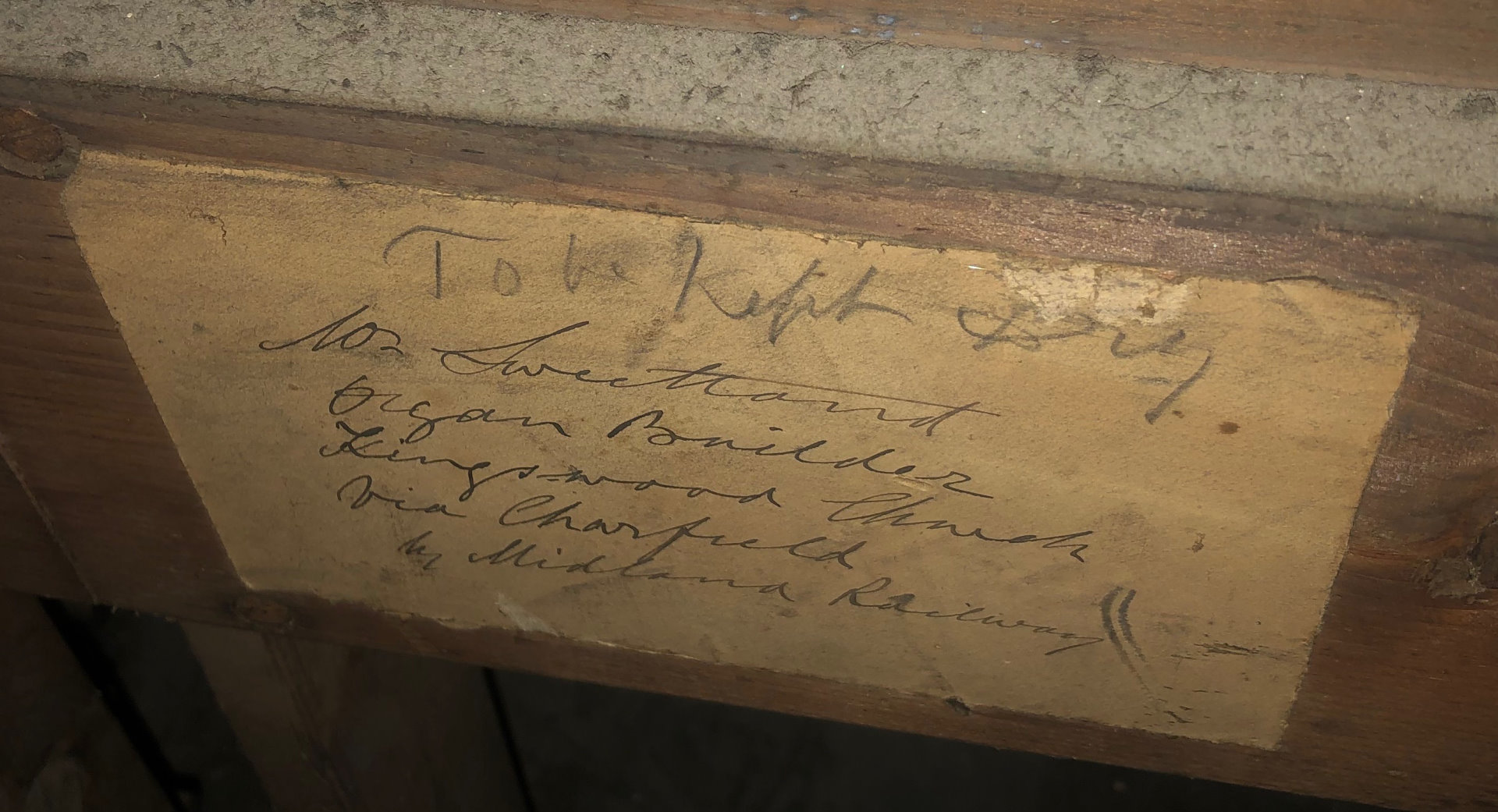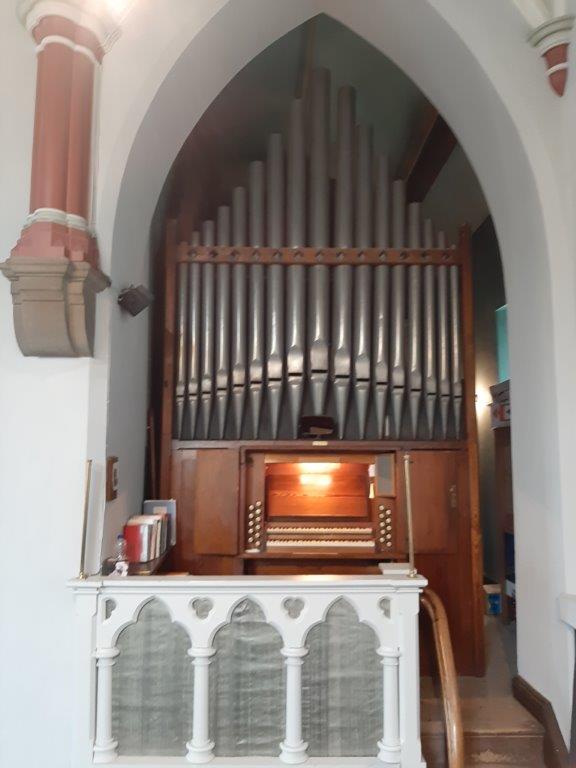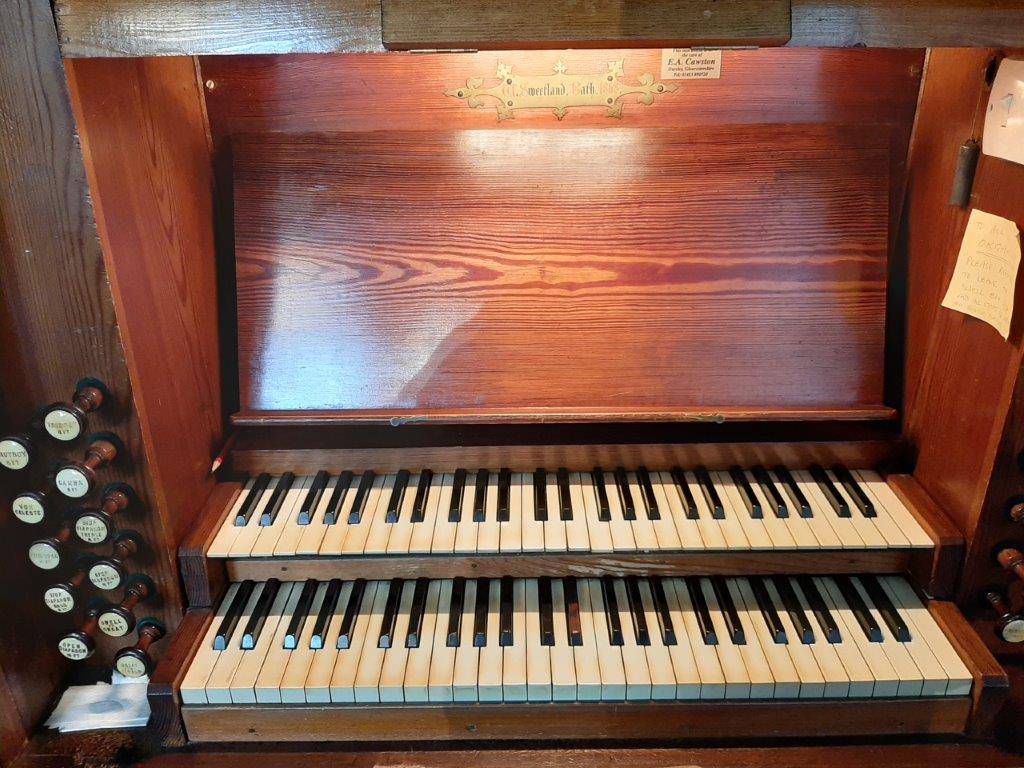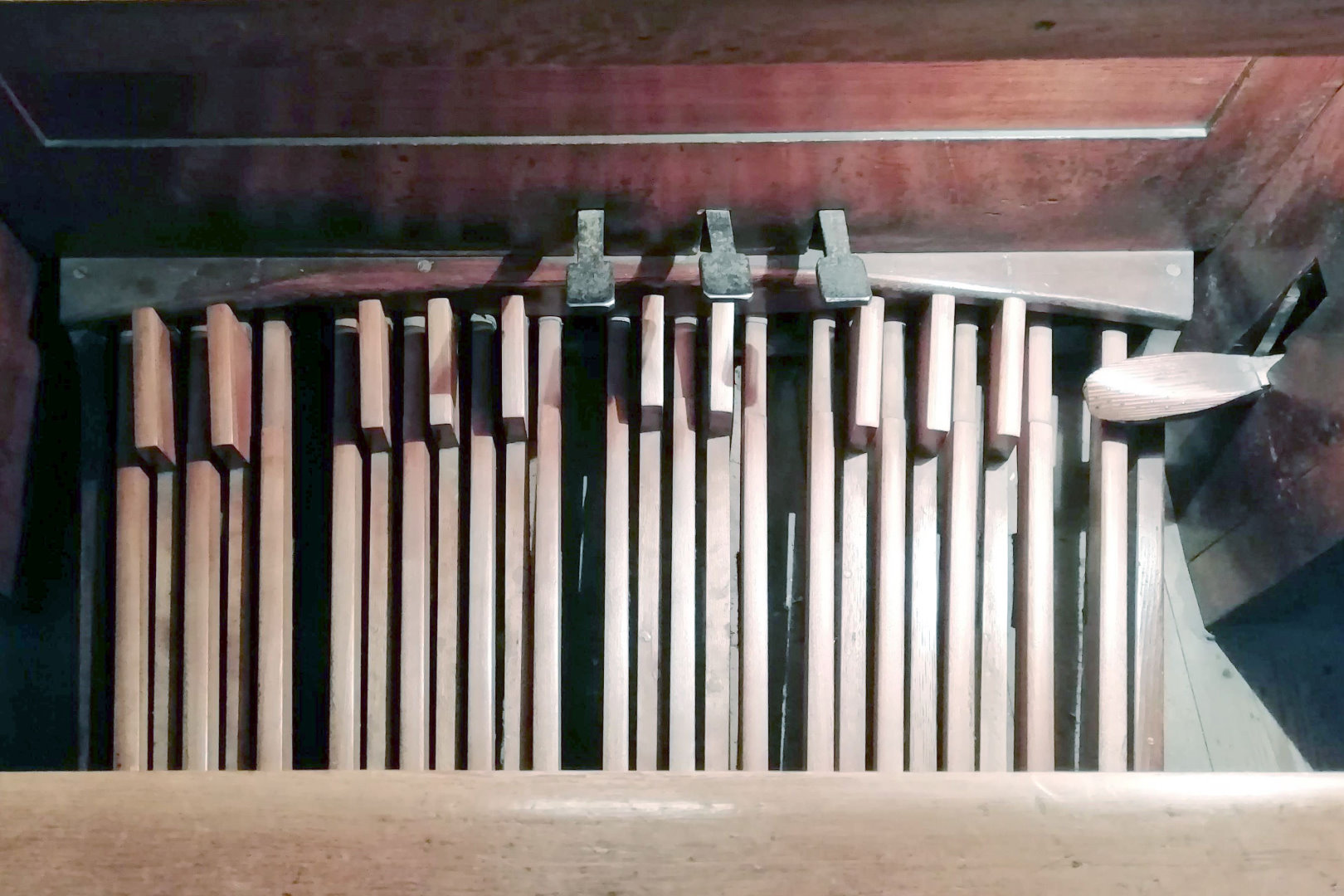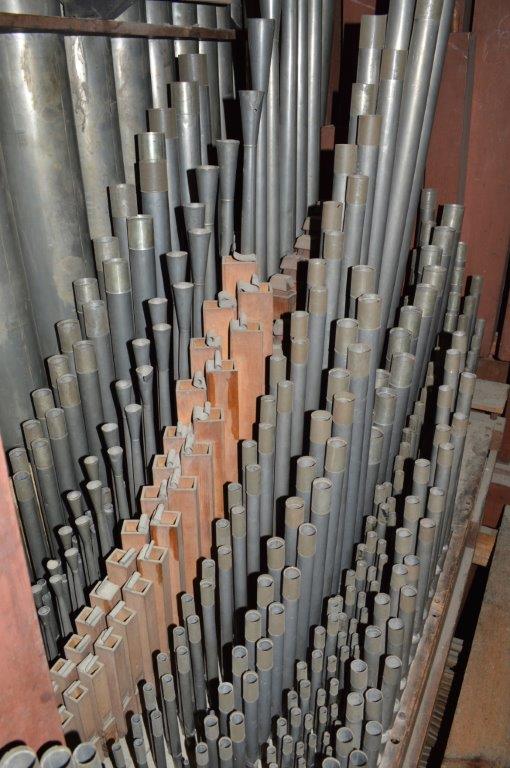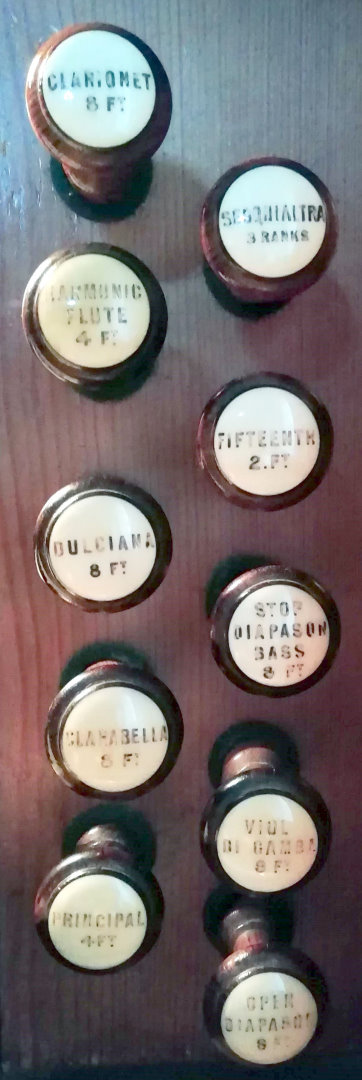Our Story
By 2018, our historic Sweetland Organ had provided music for the congregation at St Mary's for 150 years. Instruments of this kind generally need a complete overhaul every 50 years. It would be easy to assume that this great span of time is due to wilful neglect by the Parochial Church Council but nothing could be further from the truth. This is a story about a largely self-taught organ builder whose inventiveness, matchless workmanship and use of the finest available materials made him something of a celebrity in his own lifetime: William Sweetland of Bath.
The Kingswood organ is one of over 300 built by Sweetland before he retired in 1902. However the one in St Mary's is now of considerable historic importance because, possibly alone among all those that still survive, we can be sure that, never having been dismantled until 2021, it was exactly as Sweetland built it.
Fundraising for a complete overhaul and restoration started in 2018. In June 2021, two experienced organ builders, Ross Daly and Keith Jones, began the work of dismantling the organ for the first time since its installation in 1868. The work was completed in time for the Remembrance Sunday service that November and celebrated with a recital on 5 March 2022 by Jonathan Hope, the Principal Organist and Assistant Director of Music at Gloucester Cathedral. That year was also the bicentenary of Sweetland's birth.
We trust that after its restoration, St Mary's organ will fill the church with music for at least another 100 years.
Funding
This once-in-several-lifetimes project cost around £40,000. The church’s own fundraising had been severely hampered by the Covid pandemic but several generous grants were received from the AllChurches Trust, The Cecil Adams Organ Fund, Gloucestershire Historic Churches Trust, Laslett’s Charities, Renishaw Charities and Resilient Energy Mounteney's Renewables. By the end of April 2021, just over £25,000 had been raised and an anonymous guarantor came forward to ensure that the work could be started whilst necessary fundraising continued. The project was fully funded by the time of completion.
We extend a warm and heartfelt thanks to everyone who donated to the Organ Restoration Fund.About the Organ
Gill Hatton, our current Church Organist, wrote about the organ in November 2004.
“W. SWEETLAND,
ORGAN BUILDER AND TUNER,
4, CLEVELAND PLACE, WEST, WALCOT, BATH,
Begs most respectfully to return his sincere thanks to the Clergy, Gentry and Public, for their Patronage, extending upwards of thirty years, and trusts by strict attention to the quality of tone, purity of metal, and the use of well-seasoned materials in the manufacture of his instruments, to insure a continuance of their favours."
Thus begins a lengthy advertisement extolling the virtues of William Sweetland's piped organs. This includes a list of some one hundred and sixty church and chamber organs, mostly for churches of all persuasions, in the West of England and Wales. A few were commissioned much further afield, such as a chamber organ for the Earl of Galloway in Scotland. As was the custom of the day many letters of recommendation, dated 1877, from satisfied clergy, church councils and organists were included.
It is known that William Sweetland was apprenticed to Mr Sherbourne, a coach-builder of Bath, who set up as an organ builder. Sweetland established his own business in 1849 and achieved well-merited fame. Born in Devises about 1820, he died in 1910, and a few years before that he disposed of his business to the Sweetland Organ Building Co. Ltd., whose head was Harold Leach. Mr Leach wrote to the musical press in 1907, "We found amongst his papers drawings of double-touch, stop keys, and various other 'modern' improvements all worked out ... long before Mr Hope-Jones or Mr Casson thought anything about organs."
His name and work is still much in evidence throughout the South West. St Mary-de-Crypt, Gloucester has a Sweetland organ. Those of you who have "National Pipe Organs Register" anoraks don them now and go to the NPOR's website where you will find details of two hundred and six known Sweetland organs [ed: when this page was added to the website in 2021, the count was 293]. St Mary's Kingswood is not mentioned: this must be rectified [ed: the organ was added to the NPOR in 2007 at https://www.npor.org.uk/NPORView.html?RI=N00741]. You can remove anoraks now!
At the height of his career Sweetland was commissioned by St Mary's Church, Kingswood, to build a two-manual organ. In 1868 the materials for the new instrument were transported by train from Bath to Charfield and thence by cart to Kingswood. It is housed in a chamber in the north east corner of the church. William is mentioned twice more following the installation of the organ: in 1876 the church records show he was paid £1/10s for “tuning and cleaning the organ”. Similarly in 1884, when he was paid £2/10s. A substantial increase for that time. Prior to the bellows being electrified in 1933 a boy was paid to hand pump the bellows. In 1881 the record book shows “White - organ blowing - 4 months - 3s - 4d”. John Westmacott was the last official "blower" and he received 6d for a Sunday's blowing for as many as three services.
The organ has received little interference over its 135 year existence [ed: at the time of its restoration in 2021, the organ was 153 years old]. Mr Cawston, the present tuner, confirms that it retains its tracker action and original specification.
In 1872 Thomas Hardy wrote “Under the Greenwood Tree”, a tale of village musicians, who had always sung and played the music in the gallery of Mellstock Church, and who found themselves ousted by the new-fangled organ. Not so at St Mary's, Kingswood! Since records show that an organist was being paid £5 per annum in 1855, an organ of some sort must already have been in-situ. So the Sweetland organ built in 1868 was a replacement for an earlier instrument. How very forward thinking of the Church Council of the time!
Organ Specification
|
GREAT |
SWELL |
|
PEDAL |
COUPLERS |
About William Sweetland
William Sweetland, born in Devizes in 1822, seems to have been a child with a prodigious ability to make musical instruments. He made his first, a May horn, at age four and a half years. Aged six he made a dulcimer, and at nine years of age he made an accordion with eight keys. Then, when he was ten, he made a guitar and, not being satisfied with the tone of the instrument, set about making a violin which he completed at the age of 11 and which he learnt to play. At 12 he made a cello and a harp at 13. He set up in business on his own in Bath in the late 1840’s and his first organ was opened at St Michael’s Broad Street, Bath in 1849.
As well as his wonderful craftmanship Sweetland was admired, in his day, for the fine musicality of his instruments and appreciation of this is, once again, very evident among modern day organists and organ builders. The Church of England has an “Organs Adviser” for each of its 42 dioceses. In 2010 their annual conference was held in the Diocese of Gloucester, whose Organs Adviser, Ian Fox, brought them to Kingswood to hear the St Mary’s Organ. He has described it as “a little gem of an organ… sweet in tone and sounding well.” It was very noticeable that all the organ builders who came to tender for the work got quite excited when they got inside the organ to have a good look at Sweetland’s workmanship.
We might all fancy having a car manufactured to Sweetland’s standards: one that could to motor along for 153 years with just routine servicing. However Gill Hatton, the organist at St Mary’s has another analogy for the leather bellows that have been providing the wind power for the organ all this time. Imagine a pair of fine leather gloves that get used at least three or four times a week. Then think of them being handed on, and still regularly used, from generation to generation for all this time. Yes, there are a few holes but they haven’t totally fallen apart at the seams. Quite remarkable.
During preparation for the restoration work, the organ yielded up its first piece of historic information. Glued to one of the internal beams, the organ builders have found an 1868 hand-written luggage label:
Wm Sweetland
Organ Builder
Kingswood Church
Via Charfield
by Midland Railway
Best of all, scrawled in pencil at the top of the label are the words “To be kept dry”.
Based on its subsequent performance, it would seem that not only did the Midland Railway deliver it safely to Charfield Station but the railway men there kept it safe and dry.
Photographs
Click on the arrows at the top-left and top-right to view all the images.
